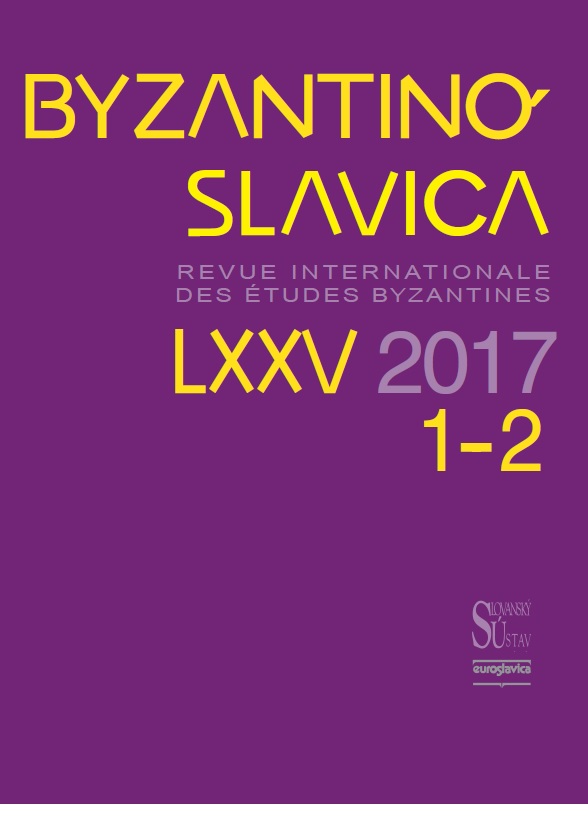Quand la structure détermine le significat: Dion Cassius, Georges le Moine et Polybe dans le prisme du De Legationibus Romanorum ad Gentes de l’empereur Constantin VII Porphyrogénète
When the structure determines the significant: Dion Cassius, Georges the Monk and Polybius in the prism from the Legationibus Romanorum ad Gentes of the emperor Constantine VII Porphyrogenesis
Author(s): Xavier Agati, Lorenzo Maria Ciolfi, Francesco Monticini, Mathieu Panoryia, Milan VukašinovićSubject(s): 6th to 12th Centuries
Published by: AV ČR - Akademie věd České republiky - Slovanský ústav and Euroslavica
Keywords: Excerpta Historica; Constantine VII ; Byzantine;historiography
Summary/Abstract: Without touching upon the thorny issues concerning the manuscript tradition and the compositional technique of the Excerpta Historica of Constantine VII (945 – 959), this paper deals with three sections of extracts (respectively, from Cassius Dio, George Hamartolus and Polybius) which are included in the volume of the collection dedicated to the Roman diplomatic missions to the barbarians, i.e. the De Legationibus Romanorum ad Gentes. Reading the selected passages in their new sequence reveals how much the Excerpta are in connection with the contemporary world of their actors (client, compilers, readers), conveying a synchronic message to them all. Moreover, by means of a close comparison with the original text of the ancient sources and a deep analysis of what was then omitted in the Byzantine work, the differences are significant enough to show the compiler being absolutely independent from the authority of his source and intervening freely on the texts in order to serve his own purposes; he plays thus the actual role of an “author by compilation”. In conclusion, the contextualization of the Excerpta Constantiniana within the framework of the “cultura della συλλογή” (culture of the collection) relocates this monumental work into the center of the mid-Byzantine literary tradition and allows us to fully understand its value of “immediate-use text”.
Journal: Byzantinoslavica - Revue internationale des Etudes Byzantines
- Issue Year: LXXV/2017
- Issue No: 1-2
- Page Range: 221-249
- Page Count: 29
- Language: French
- Content File-PDF

